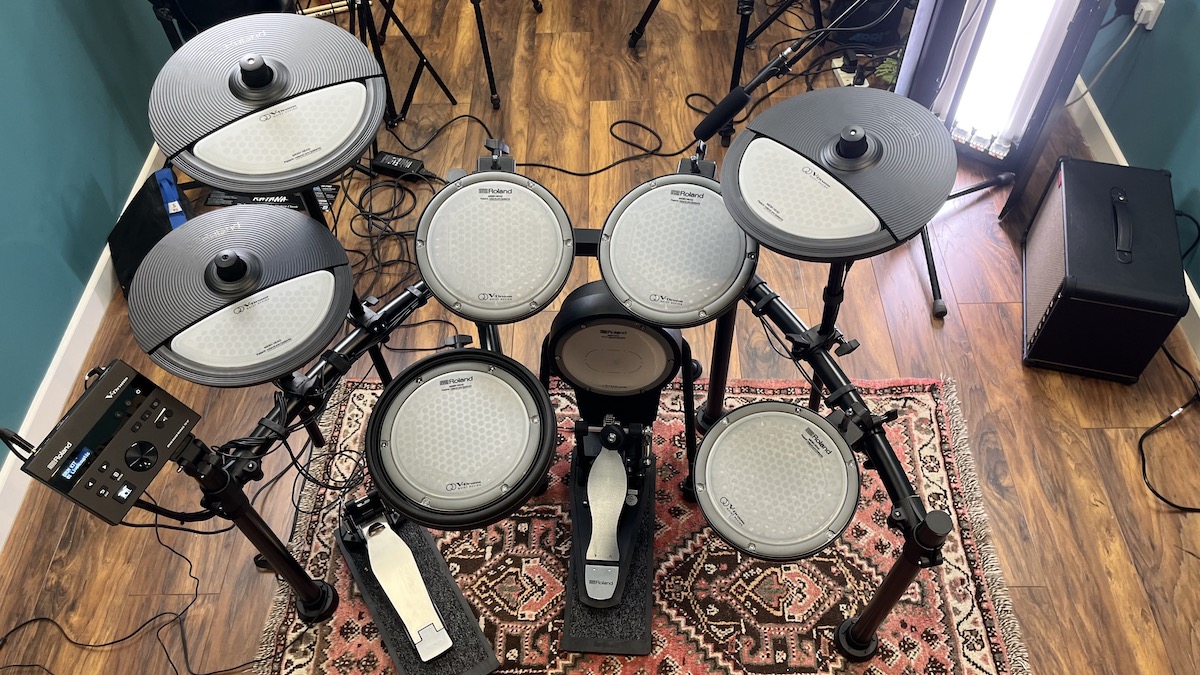MusicRadar Verdict
Roland’s VQD pairs its latest low-noise pad technology with a tried and tested module. The combination of super-quiet performance, great sounds and wireless jamming via Bluetooth makes the VQD106 a winner. If noise limits stand between you and playing the drums then this solution is worth every penny.
Pros
- +
Excellent low-noise performance
- +
Responsive feel from the pads
- +
Compact, yet sturdy to play
Cons
- -
It’s an expensive kit
- -
Only single-zone toms pads
MusicRadar's got your back
There’s an inherent issue with playing the drums that has plagued drummers since the birth of the drum kit. It’s one that can range from being a small problem or, at its most extreme, the difference between being able to pursue drumming as a hobby or not. And it’ll rear its head for all of us, regardless of our ability or budget. I am of course talking about noise. There’s no escaping it - playing the drums is a loud activity. Electronic drums go a very long way when it comes to diminishing the amount of intrusive noise we create while playing, but even with headphones and mesh heads, depending on where your kit is located you could well still end up annoying those around you.
Roland has been at the cutting edge of many developments in electronic drums, and its latest is the VQD106 kit (VQD stands for V-Drums Quiet Design), which claims to be able to reduce the noise levels by 75% when compared to other electronic drum sets. In fact, Roland is so sure of its noise-busting features that it says that the VQD106 produces the “lowest playing-noise in the history of electronic drum kits”.
Build quality
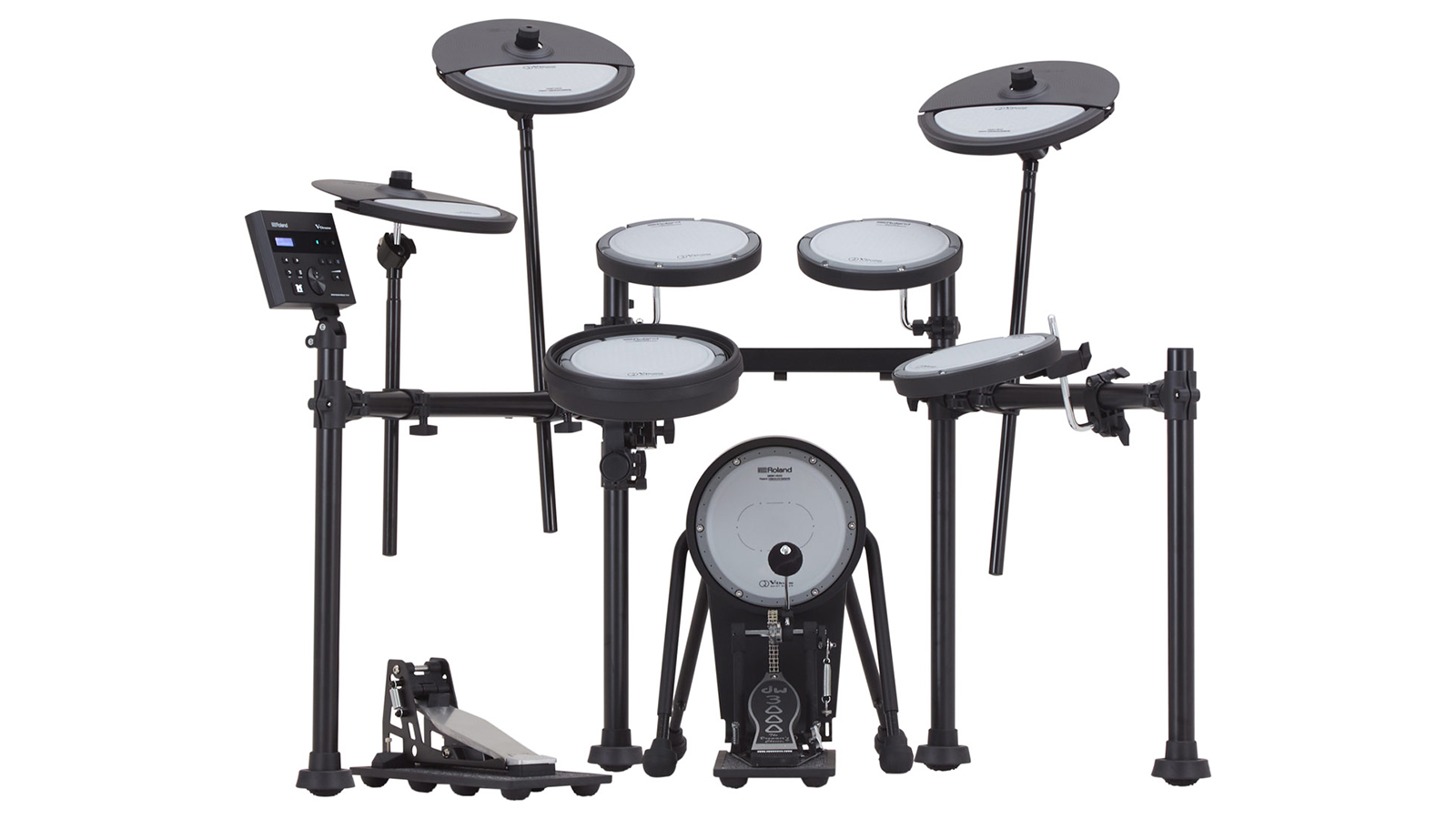
That’s quite a claim, so what exactly makes the VQD106 capable of being so much less intrusive than its competitors, and indeed, Roland’s other electronic drum sets? There’s no single answer, instead, the solution lies in a number of design points which have been applied to pretty much every area of the kit.
First though, we need to understand the main causes of the noise issues when it comes to electronic drums. There are two bothersome areas: airborne and vibrational noise. The first is the noise we create when hitting a pad with a stick, and while loud in the room, is less prone to travelling too far.
Vibrational noise, however, is often the most problematic - particularly if you’re playing upstairs - to the point where you might not even realise it’s a problem at all. That is until your co-dwellers and neighbours start banging on the walls and ceilings. Vibrational noise comes from every part of the kit: hit a pad and the vibrations travel through your drum rack and straight into the floor. Similarly, your floor-mounted pedals are primed to send the thump of the bass drum and hi-hat controller straight into the fabric of the building.
Unless you’re playing on a solid concrete floor, this will travel through the floor joists to the room below as well as into the walls. This isn’t just marketing hot air, either. I’ve experienced angry neighbours knocking on my door during what I believed to be a near-silent post-10pm practice session. As I quickly found out, it turns out that even the most tolerant of grindcore fans don’t appreciate the three-two clave of Rosanna interrupting their blastbeats of an evening.
So, the way to combat this is via isolation, or ‘decoupling’. That is, removing the ability for vibrations to transfer between the drum kit and the room you’re playing it in. Roland has gone to town in this regard, even creating its own mini-documentary detailing the story of the VQD.
Want all the hottest music and gear news, reviews, deals, features and more, direct to your inbox? Sign up here.
Starting from the floor, the VQD106 is built around what appears - at a glance - to be a regular drum rack. But look a little closer and you’ll spot the domed rubber feet under each post. This is the first step towards vibration-busting, but it’s literally just the start. The bass drum pedal and hi-hat controller are mounted on NEQ-K and NEQ-H platforms, similar to the Noise Eater products we’ve seen previously from Roland. Combined with the rack feet, these are designed to achieve a similar result to the homebrew ‘tennis ball platform’ you might have come across, except they’re a lot neater looking and you don’t have to make them yourself.
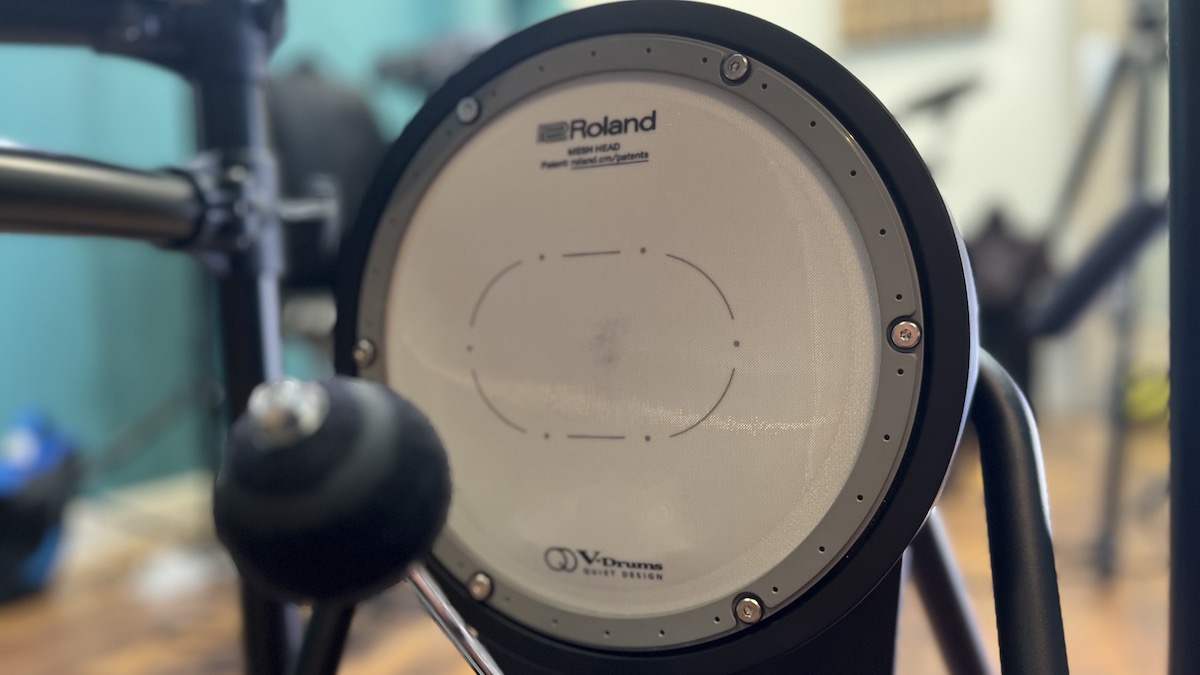

Next is the KDQ-8 bass drum tower, which again is equipped with boom-busting rubber isolation feet to minimise the amount of impact noise travelling through the floor. But, as well as this, the VQD comes with a nifty tennis ball beater. This squidgy mallet works with the mesh head and a floating, triple-layered playing surface to reduce the initial amount of vibrations created by hitting the pad as well as minimising the airborne smack sound in the room.
But the biggest news comes from the pads. Inside, the playing surface is made of a honeycomb-shaped rubber material. In each case, this is topped with a mesh head coating in order to maintain a familiar feel when playing, but to further aid with stopping the vibrations travelling into the stand, the underside of each pad is vented. These vents allow stick vibrations to disperse rather than transfer, effectively stopping the problem before it arises.
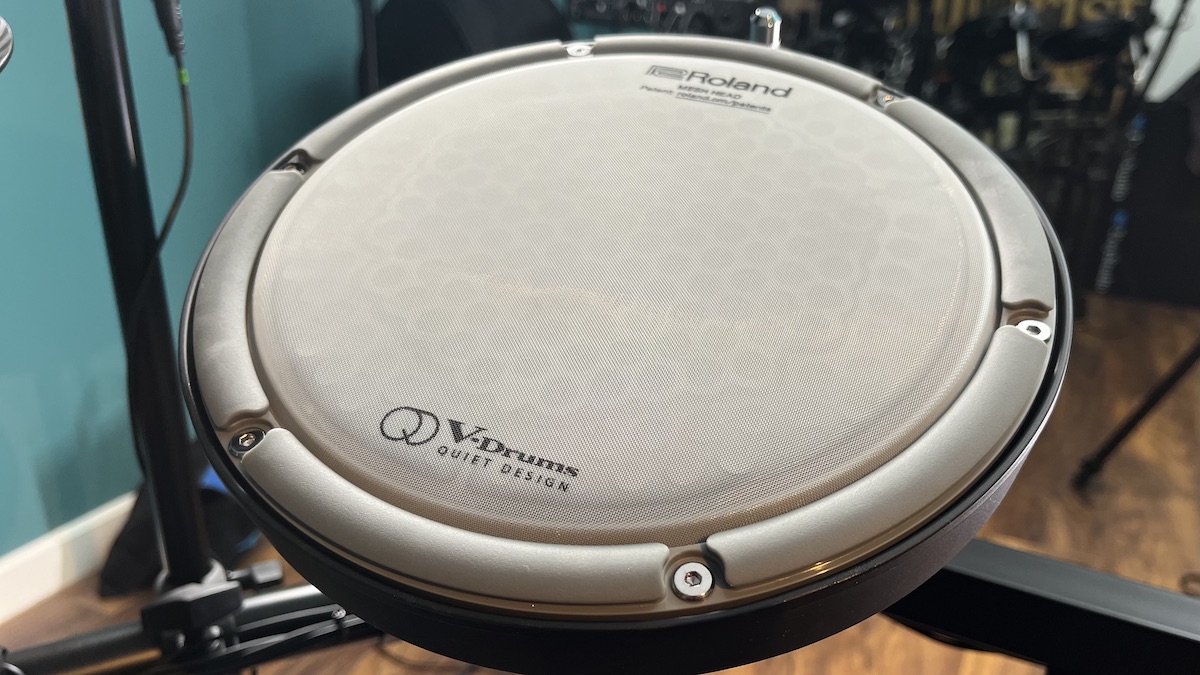
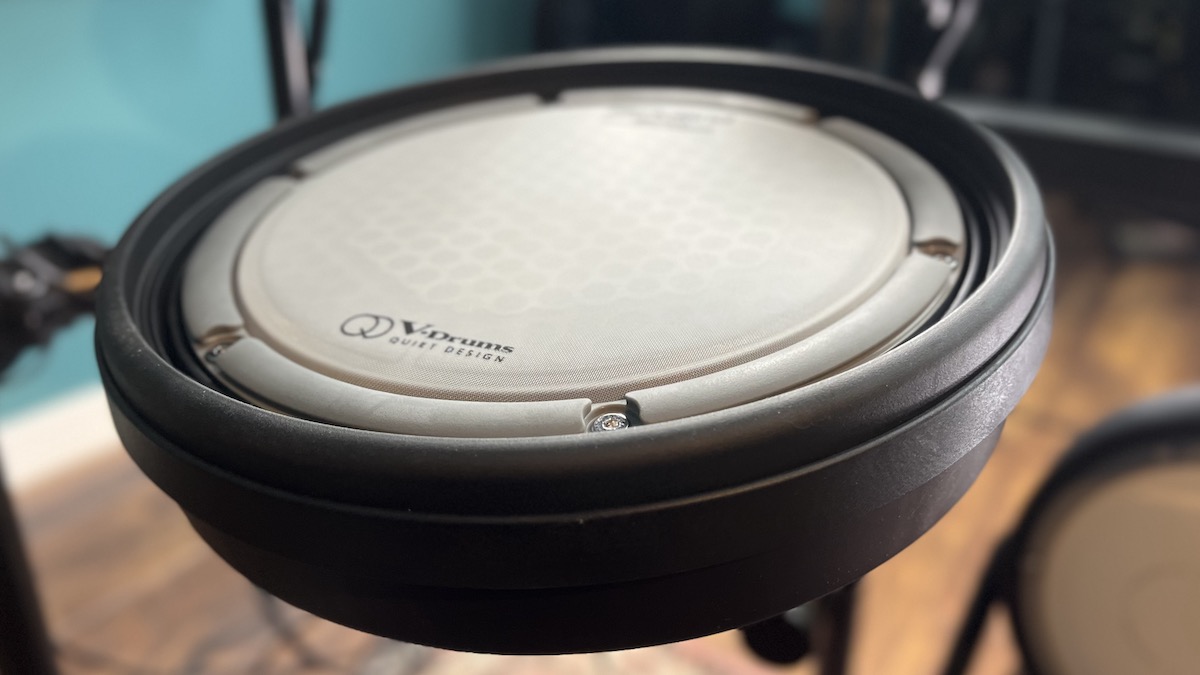
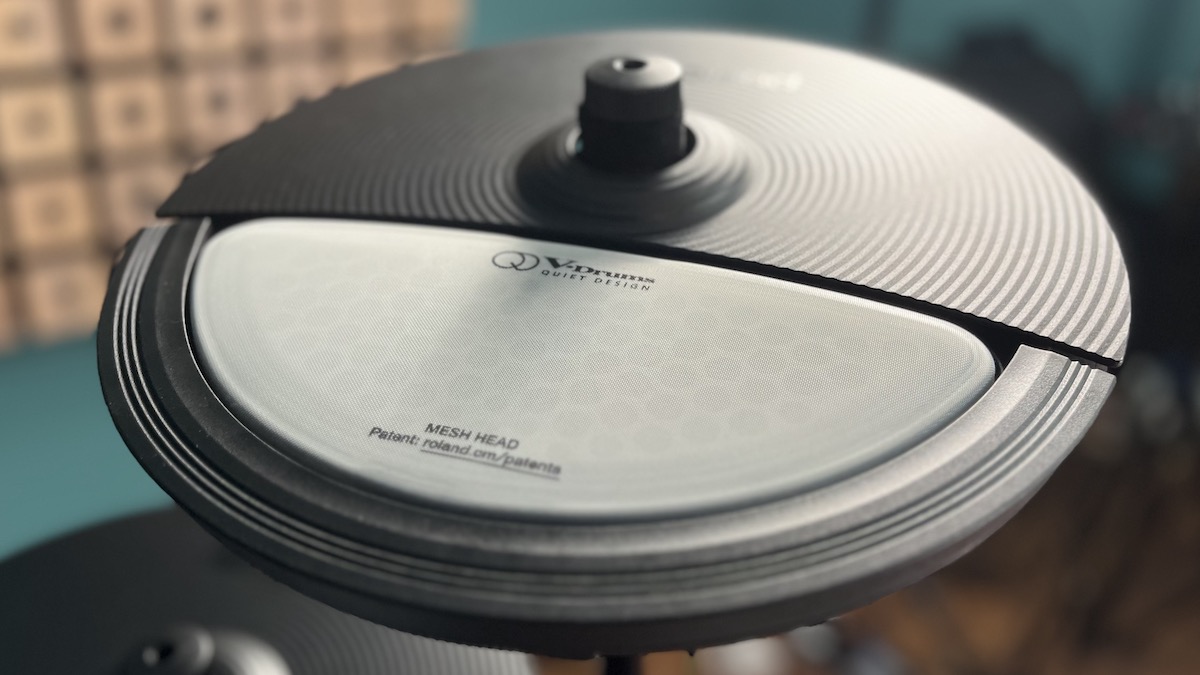
The cymbals feature the same honeycomb/mesh combo on the bow section of the cymbals, and the edge zones are cushioned with a soft rubber coating, the idea being that you can play time on the crash or ride edge without compromising the low-noise properties of the VQD. Finally, the playable sections of the cymbals are isolated from the plastic parts, once again… you guessed it, stopping vibrations.
The VQD106 comes as a five-piece configuration, plus 3x CYQ-12 cymbal pads for hi-hat, crash and ride cymbals (both two-zone, choke-able). The PDQ-8S snare pad is two-zone, while the PDQ-8 tom pads offer a single zone, and the whole lot is built around Roland’s TD-07 module. As well as this configuration, Roland offers the VQDPADS setup - a brainless kit in the same configuration listed, allowing you to hook the pads up to your existing Roland drum module if you already own one.
Sounds & verdict
For the first time in a long time, this review isn’t going to feature on the sounds coming out of the module (you can read our review of the TD-07KV for that). Instead we’re interested in the sound the VQD106 claims not to produce. To do this, Roland kindly sent a regular TD-07 in order to compare the noise levels first-hand, meaning the VQD should be fairly instantaneous in its noise-beating performance.
MusicRadar’s e-drum testing room sits above a communal kitchen area in a busy photo studio. But there’s a problem - how do you know how noisy a drum kit is in the room below if you’re upstairs making all the noise? Simple, you enlist a colleague armed with a decibel meter, and take turns to play/listen.

I’ll cut to the chase - the VQD not only works, but it does everything it says. Inside the room it’s noticeably quieter all round when compared to the TD-07KV kit, but what surprised me the most was the feel of the kit. With so much foam in place, it’s surprising how similar to Roland’s standard mesh-equipped pads it feels. There is a difference - it’s spongier and more forgiving on your hands, almost like a cross between Yamaha’s TCS and Roland’s PDX-8. But, these heads are tensionable too, so you can customise the feel to an extent.
They’re responsive and feel great to play while achieving the low-noise performance they set out to. The only major gripe is that the tom pads are single-zone. This is also a limitation of the TD-07 module, however if you did want to connect this to a two-zone capable brain, or purchase the PADS configuration, you’ll still only be able to get one zone from the tom pads.
I’ll cut to the chase - the VQD not only works, but it does everything it says
I was expecting the cymbals - specifically the soft, squidgy edges - to be the biggest change in feel. They do feel different, particularly if you’re used to playing Roland’s latest CY-14T or CY-16t ‘thin’ models. But it’s not necessarily in a negative way. There’s a little bit more weight to these, but crashing on the edge results in an absorbent response. Roland makes no claims of reduced hand fatigue, but with all the vibrations disappearing into the honeycomb and other design points, it certainly feels like there are fewer fatiguing vibrations transferring back into the stick. That’s a double win for anyone who has ever wailed on an electronic kit for a couple of hours only to find that their wrists and forearms are starting to ache.
Overall, I have to applaud Roland. The electronic drum market is becoming a fiercer arena by the month, and while there’s no shortage of options when it comes to copycat kits, innovation has to come from somewhere first. Of course, that innovation comes at a price. The VQD106 is not at an entry-level price point, but it is paired with a mid-range Roland module.
The big question is, is it worth the difference? That’s where you’re going to have to decide for yourself. If noise isn’t a big problem, then it wouldn’t make sense, but if the building where you play your kit makes it impossible to enjoy without annoying everyone around you, it’s a far cheaper option than investing in structural soundproofing measures.
Once again, Roland has proved that it’s pushing things forward, and it’s not hyperbole to say that the VQD could well unlock drumming for people who otherwise can’t possibly play a kit at home.
Hands-on demos
Andertons
65Drums
Specification
- Type: Five-piece, low-noise electronic drum kit
- Configuration: Kick, snare, 3x toms, hi-hats (w/foot control), crash, ride
- Pads: 1x KDQ-8, 3x PDQ-8, 1x PDQ-8S, 3x CYQ-12
- Stand: Four-post w/noise-lowering feet
- Module: Roland TD-07
- Contact: Roland

Stuart has been working for guitar publications since 2008, beginning his career as Reviews Editor for Total Guitar before becoming Editor for six years. During this time, he and the team brought the magazine into the modern age with digital editions, a Youtube channel and the Apple chart-bothering Total Guitar Podcast. Stuart has also served as a freelance writer for Guitar World, Guitarist and MusicRadar reviewing hundreds of products spanning everything from acoustic guitars to valve amps, modelers and plugins. When not spouting his opinions on the best new gear, Stuart has been reminded on many occasions that the 'never meet your heroes' rule is entirely wrong, clocking-up interviews with the likes of Eddie Van Halen, Foo Fighters, Green Day and many, many more.
